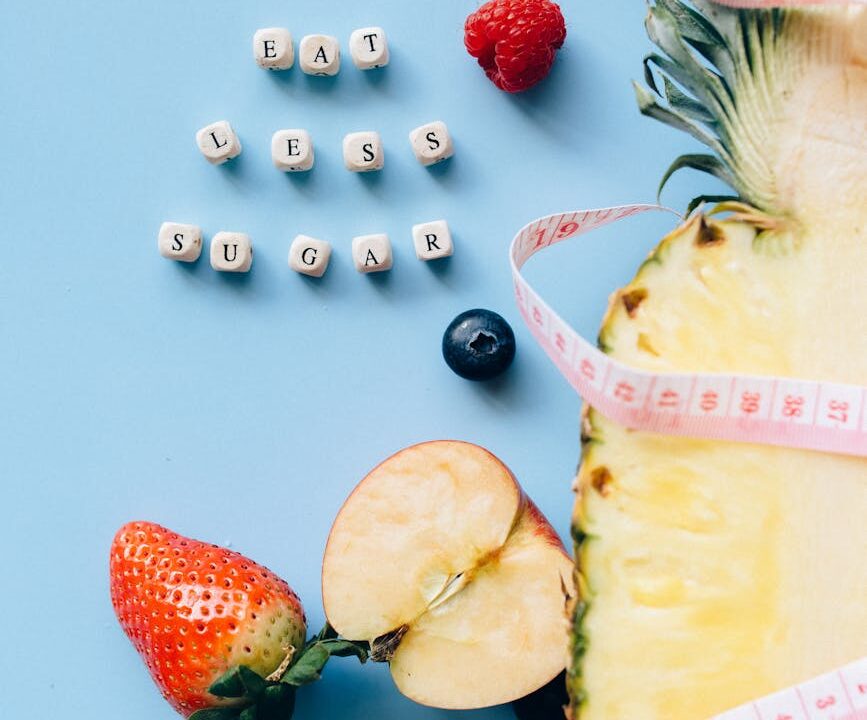
Exploring Lifestyle Products
The world of lifestyle products is big and always changing. It mirrors the twists and turns of what folks like and how the market shifts. This bit looks at what people are into now and how all the buzz around wellness affects what we buy.
Trends in Consumer Behavior
Getting what makes people tick helps explain why some lifestyle stuff gets a lot of attention. Here’s what’s hot right now:
-
DIY Health Checking: About a quarter of Americans show interest in home-tests for vitamin levels, cold and flu indicators, and cholesterol. It’s proof people like the idea of skipping the doc’s office for some things. And in places like China, folks are really getting into home health tests more so than doctor visits (McKinsey).
-
Wearable Health Tech Craze: Half of the folks out there have snatched up fitness trackers. Things like smart rings for sleep and glucose monitors are picking up steam. They’re perfect for those who want to keep tabs on health stats daily (McKinsey). It’s all about self-improvement and control these days.
-
Proven Health Products: People are leaning more towards products proven by science, setting aside “natural” labels for ones that really work according to clinical studies. It’s about knowing a product truly delivers (McKinsey).
| Trend | Percentage of US Consumers Interested |
|---|---|
| Vitamin and Mineral Deficiencies | 26% |
| Cold and Flu Symptoms | 24% |
| Cholesterol Levels | 23% |
Impact of Wellness Market
The wellness market is booming, shaping how we pick products and adapt our habits.
-
What’s Happening to the Wellness Market: In America, this market’s hitting $480 billion, growing 5-10% each year. It’s not a passing phase – it’s something 82% of folks care about, with plenty of interest in the UK and China too (McKinsey).
-
Focusing on Healthy Choices: People are putting cash into things that make them feel better. From gym stuff to health tech, folks want what really works. Proof in the pudding through testing is a big deal in marketing these days.
Understanding these tweaks in behavior and the growth of the wellness market is crucial for folks buying and selling. Knowing the lay of the land helps consumers snag the best stuff that fits their health and care goals.
For more on related topics, explore our articles on morning routines test, mindfulness tips test, and building habits test.
Wellness at Home
More folks are jumping on the wellness wagon at home, largely due to cool tech that lets you check up on your health without leaving the house. Here, we peek into health monitoring gadgets and deficiency testing—your new secret weapons for making your everyday life healthier.
Health Monitoring Devices
These nifty little gadgets are your new at-home health sidekicks, keeping tabs on your well-being. Think fitness trackers, smart scales, and blood pressure gizmos. Most of ’em sync up with your phone, handing you real-time stats to keep you in the know about what’s going on with your body.
| Device Type | Main Purpose | Snazzy Features |
|---|---|---|
| Fitness Trackers | Track your moves | Pulse check, step tally, snooze tracker |
| Smart Scales | Crunch body numbers | BMI, muscle heft, fat facts |
| Blood Pressure Monitors | Keep pressure in check | Systolic/diastolic insight, heartbeat quirks |
These tools are gold for fitness buffs, or anyone jazzed about starting their day with healthy morning routines.
Testing for Deficiencies
DIY deficiency testing is on the up and up, with a chunk of Americans itching to find out if they’re short on vitamins or minerals (McKinsey Study). These tests clue you in on what’s missing in your diet and how you can tweak your eating and living habits.
Handy Deficiency Checks:
- Vitamin and Mineral Shortages: Kits let you see your levels of vital vitamins (like A, B12, D) and minerals (iron, calcium, magnesium).
- Cold and Flu Signs: Quick kits point out infections, so you know when to hit up the doc.
- Cholesterol Counts: Blood test kits let you keep an eye on cholesterol, key for heart upkeep.
| Deficiency Check | Interest (US Folks) | Big Perks |
|---|---|---|
| Vitamin and Mineral | 26% | Custom eating plans, focused supplements |
| Cold and Flu Symptoms | 24% | Swift spotting, improved health care |
| Cholesterol Levels | 23% | Heart risk forecasting |
These days, people are leaning more on products backed by science rather than just natural ingredients (McKinsey Study). It fits in with the rising excitement for at-home health tools.
Diving into these products can spice up your mindfulness routine, give a boost to habit building, and ramp up your overall health game.
Beauty Consumer Trends
Online Purchases Post-Covid
Oh, how the COVID-19 pandemic has turned the tables on buying habits, especially in the world of mascara and moisturizer. Online buys of beauty products are skyrocketing! I mean, a whopping 87% of beauty shoppers are either maintaining or upping their internet spending game. Can you believe it? Back in the day, around 2019, a mere 16% splurged over $50 on beauty bits online. Fast forward to now, and it’s 49%—that’s nearly half waving goodbye to their online budget limits.
| Changes in Spending | Pre-Covid (2019) | Post-Covid |
|---|---|---|
| Spending more than $50 on beauty stuff online | 16% | 49% |
| Dropping over $101 per month on online beauty | 2% | 23% |
| Hunting for Black-owned beauty brands | 50% | 75% (Gen Z), 58% (Millennials) |
If you thought that was something, meet Gen Z and Millennials—our beauty shopaholics. Post-pandemic, 66% of Gen Z and 58% of Millennials are hitting up online carts with even more vigor. Beauty fans aren’t the type to trim their daily glam budgets even during tough times, highlighting just how comfy they’ve gotten with online buying.
Find killer tips on morning routines and spice up your outdoor excursions with confidence as you binge through our detailed product inspections.
Black-owned Beauty Brands
There’s been a real awakening about Black-owned beauty brands lately. A good chunk of buyers are showing love to these businesses that’s been long overdue. Around half of all beauty fans are combing aisles for Black-owned beauty magic, but among Gen Z and Millennials, it’s like a movement—75% and 58% respectively are actively seeking them out.
| Consumer Type | Chasing Black-owned Brands |
|---|---|
| Typical Consumers | 50% |
| Gen Z | 75% |
| Millennials | 58% |
This boom signals a demand for greater representation and inclusion in the beauty biz. Brands hopping on this bandwagon aren’t just expanding their horizons—they’re connecting with a young, socially aware crowd. Jump into more deals and eco-friendly habits to know what ticks!
Catching up on these trends is pretty much key for anyone eyeing success in beauty-land. With more folks shopping beauty bits online and embracing Black-owned brands, it opens doors for businesses to sync with what shoppers are craving, seal the deal, and win their hearts. Swing by our pointers on blogging tips and the hottest apps for productivity to keep your hustle sharp!
Product Success Factors
Looking at lifestyle products, cracking the code for product success is crucial. Let’s dive into two biggies: knowing your customers inside out and offering something they can’t resist.
Customer Research Importance
The true power of a hit product lies in solving real problems for folks who actually use it. Customer research is the ticket to figuring out what they need. Think surveys and talking to people – these are golden when it comes to figuring out what gets ‘em excited and what drives them nuts.
Tapping into this can make your product a hero. Imagine fitness folks who seriously want gear that doesn’t quit. They crave stuff that’s tough and nails those health stats. Give the people what they want and you could be the next big thing.
Unique Value Proposition
In a noisy market full of shouting, your product needs to whisper (or shout) its specialness. Your unique value proposition (UVP) says, “Hey, choose me!” It’s about standing out in a sea of sameness.
A UVP wraps up the goods and the cool features your product offers. Picture a travel gizmo that’s part charger, part power bank. Talk about handy dandy! It’s all about being the perfect answer when someone asks, “Why your product?”
Combining Factors
Smash together killer customer research with a standout UVP and you’re onto something. Keep eyes and ears open for feedback, and let customers help tweak what you’ve got. This keeps you in the game long term. Listening is key, so products don’t become yesterday’s news.
| What Matters | How Much? |
|---|---|
| Knowing Your Audience | Super Important |
| Finding Their Frustrations | Super Important |
| Crafting Your UVP | Super Important |
| Always Listening | Pretty Important |
| Shouting About It (Marketing) | Pretty Important |
Want more wisdom on lifestyle goodies? Check out our hot spots like morning magic, zen skills, and jet-set must-haves. Whether it’s checking out gym gear or nabbing hot deals, getting your head around customer needs and offering something unique can light the path forward.
UL Certification Explained
Keeping Products Safe
UL Certification, from those trusty folks over at Underwriters Laboratories (UL), is like your product’s safety badge of honor. It’s there to make sure that what you buy isn’t just cool but also ticks all the safety and environmental boxes required by local and federal laws. They’re not messing around—products go through some serious checking to meet UL’s high standards for safety.
Getting that UL stamp means a product has jumped through all the hoops, including being prodded and poked for safety compliance. UL folks might even pop by to see how things are cooked up in the factory, check labels, and ensure the product doesn’t turn rogue over its life span.
Manufacturers flashing their UL Certification basically scream, “We care about quality and your safety!” It’s no surprise consumers like us feel more at ease and trust brands that take this extra step. If you’re into gadgets or trying out the latest fitness gear, peeping at that little UL tag is key before pulling the trigger on a buy.
What’s the Deal with UL Listed and UL Certified?
Both UL Listed and UL Certified labels mean the product’s been given a good once-over for safety, but these badges aren’t the same flavor.
-
UL Listed Products: Think standalone goodies like your basic single-use items. They’ve gone through UL’s rigorous gauntlet under normal conditions. Buying UL Listed gives users a head nod on safety, making options more reliable for everyday use.
-
UL Certified Products: This is where it gets a bit fancier. The “Certified” crew covers more ground, showing that a product isn’t just safe but also holds up under different regulations, like keeping things environmentally friendly. Look for that UL stamp indicating it’s been through UL’s rigorous wringer and it’s got ongoing checkups—like a health plan for your product.
| Comparison | UL Listed | UL Certified |
|---|---|---|
| Scope | Single-use items | Widest range of goods |
| Testing | Checked for safety with casual use | Covered for environmental and safety stuff |
| Labeling | UL Listed badge | Certified UL mark with follow-up |
| Follow-up Service | N/A | Continuous checks on production, paperwork, and labeling |
By wrapping your head around these UL badges, shopping gets smarter. Before investing in lifestyle fun stuff, knowing these differences can steer you well. Dive deeper into the world of quality assurance with some of our reviews on go-to productivity apps or essential blogger gear.
Choosing UL Certified or UL Listed means not only are you buying stuff that fits your needs, but you are also banking on high safety and quality. That’s the gear we’re talking about for those aiming to step up their lifestyle while feeling secure and savvy.
Quality Assurance in Products
Software Testing Overview
When it comes to making sure digital products don’t crash and burn, quality assurance (QA) is where it’s at. Software testing is like the detective work of the tech world, sniffing out bugs and glitches in the code while also giving the software’s usability, speed, and safety features a good once-over (AltexSoft).
QA software testing sizes up:
- Functional Testing: Making sure the software does its job without fuss.
- Performance Testing: Seeing how quickly and smoothly everything runs.
- Security Testing: Finding and fixing software weaknesses.
- Usability Testing: Checking if folks can use the product without tearing their hair out.
- Compatibility Testing: Ensuring it works on different gadgets and systems.
Seven Principles of Testing
Testing isn’t just poking around in the software to see what breaks. There are ideas behind it to make sure we’re not missing the forest for the trees (AltexSoft):
- Testing Shows the Presence of Defects: Tests prove there’re bugs, but can’t show there are none.
- Exhaustive Testing is Impossible: You can’t possibly test every single thing; it’s about picking your battles.
- Early Testing: Start testing early to catch problems before they snowball.
- Defect Clustering: Some bits of the software tend to be troublemakers, holding most of the issues.
- Pesticide Paradox: Running the same tests over and over misses new problems; freshen things up!
- Testing is Context Dependent: Different products need different test approaches.
- Absence-of-Errors Fallacy: No errors doesn’t mean it’s problem-free for the user.
| Principle | Explanation |
|---|---|
| Presence of Defects | Finding existing defects in the software. |
| Impossible Exhaustive Testing | Can’t test every possible scenario. |
| Early Testing | Spot defects pronto with beginning phase testing. |
| Defect Clustering | Many defects found in just a few places. |
| Pesticide Paradox | Update tests to find new issues. |
| Context Dependence | Different contexts require unique testing strategies. |
| Absence-of-Errors Fallacy | Bug-free doesn’t mean it meets user requirements. |
Getting a grip on these principles makes for rock-solid testing and high-quality products. If you’re keen on boosting your productivity, check out morning routines test or grab some mindfulness tips test. On the hunt for some killer testing tools? Visit blogging resources test and productivity apps test.
















